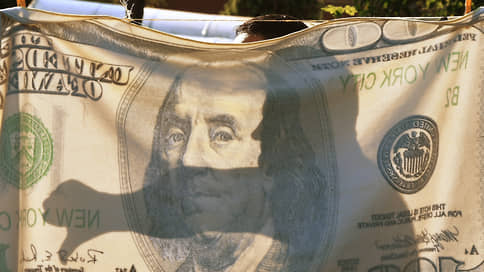Dollars arranged by color – Kommersant FM
[ad_1]

The dollar on the Moscow Exchange dropped below 93 rubles. And the Russian currency will continue to strengthen in the medium term. In any case, this scenario seems preferable to Kommersant FM’s interlocutors. This is indicated by the preparation of exporters for the beginning of the tax period and the likely increase in the key rate, which may occur on October 27. The ruble has been increasing its position since the end of last week. On October 25, the dollar dropped below 93 rubles, the euro surpassed the 99.5 ruble mark. Meanwhile, at exchange offices the exchange rate is traditionally higher than the exchange rate. However, in some branches you can find great deals. Details from Vladislav Viktorov.
Despite sanctions and restrictions from the Central Bank on the issuance of currency, there is enough cash in dollars and euros in exchange offices. In any case, as a call to some points showed, now you can easily get $10 thousand. As a rule, you don’t even need to order them in advance. The exchange rate is traditionally worse than the exchange rate. While the dollar fell below 93.5 rubles at auction, cash was sold for an average of 95 rubles. Besides, everything changes every three minutes. However, in one of the capital’s exchange offices they offered to buy cash dollars almost at the exchange price, but with one caveat:
“It depends on what kind of dollar you need, “white” or “blue”? If it doesn’t matter to you, then we’ll sell the “white” ones at 93.80. There are banknotes of the latest sample, and there are the previous ones. The previous sample – “white” – is sold for 93.80 rubles. And “blue” – 94.25 rubles. But they need to be ordered an hour before arrival.”
The story of different exchange rates for old and new dollars is not a sensation. Even before the crisis, banknotes that had been in circulation for a long time were sold by some exchangers cheaper than fresh ones. But now, due to the fact that foreign currencies are not officially supplied to Russia, this has become more relevant.
However, experts warn: older banknotes, for example, in Turkey, may also be exchanged at an unfavorable rate or not accepted at all. Against this background, Kommersant reported on Tuesday that some banks are returning to currency trading through ATMs. Tinkoff Bank, for example, promises a spread on dollars of 1% to the exchange one. But only during Moscow Exchange opening hours. And independent expert on financial markets Alexey Bushuev does not rule out that it is no coincidence that such services are returning:
“For example, the notorious “blue” dollars. I fully admit that the purpose of such a step for an abstract bank may be, for example, a large stock of old-style dollars that needs to be sold. At one time, I myself did something similar, although not through ATMs, that is, I set the collapse rate, the most profitable one, and sold it even below the price.”
Judging by data from the Russian Standard Bank, which Kommersant reviewed, Russians are once again interested in foreign currency. In September, the number of cash purchases of dollars was three times higher than sales. Although back in July the Central Bank said that citizens were getting rid of unfriendly currencies against the backdrop of the fact that the exchange rate, for example, of the dollar, was around 100 rubles. Now the trend has changed. And there are several factors that indicate a medium-term strengthening of the Russian currency, says Valery Weisberg, director of the analytical department of the investment company Region:
“There has been an increase in the supply of currency, despite the fact that demand from importers is not growing, that is, the balance in the market is shifted towards supply. Range 90-93 rub. – the most stable in the coming months. If the Central Bank not only this Friday, but further increases the key rate, it is quite possible that for some longer time the ruble may consolidate slightly above the level of 90 rubles. for a dollar.”
Most Kommersant FM interlocutors have no doubt that on October 27 the key rate may rise from 13% to 14%. And given the geopolitical situation in the world, there is a possibility that Russians will once again remember the long-standing tradition of buying currency in any unclear situation.
Everything is clear with us – Telegram channel “Kommersant FM”.
[ad_2]
Source link





